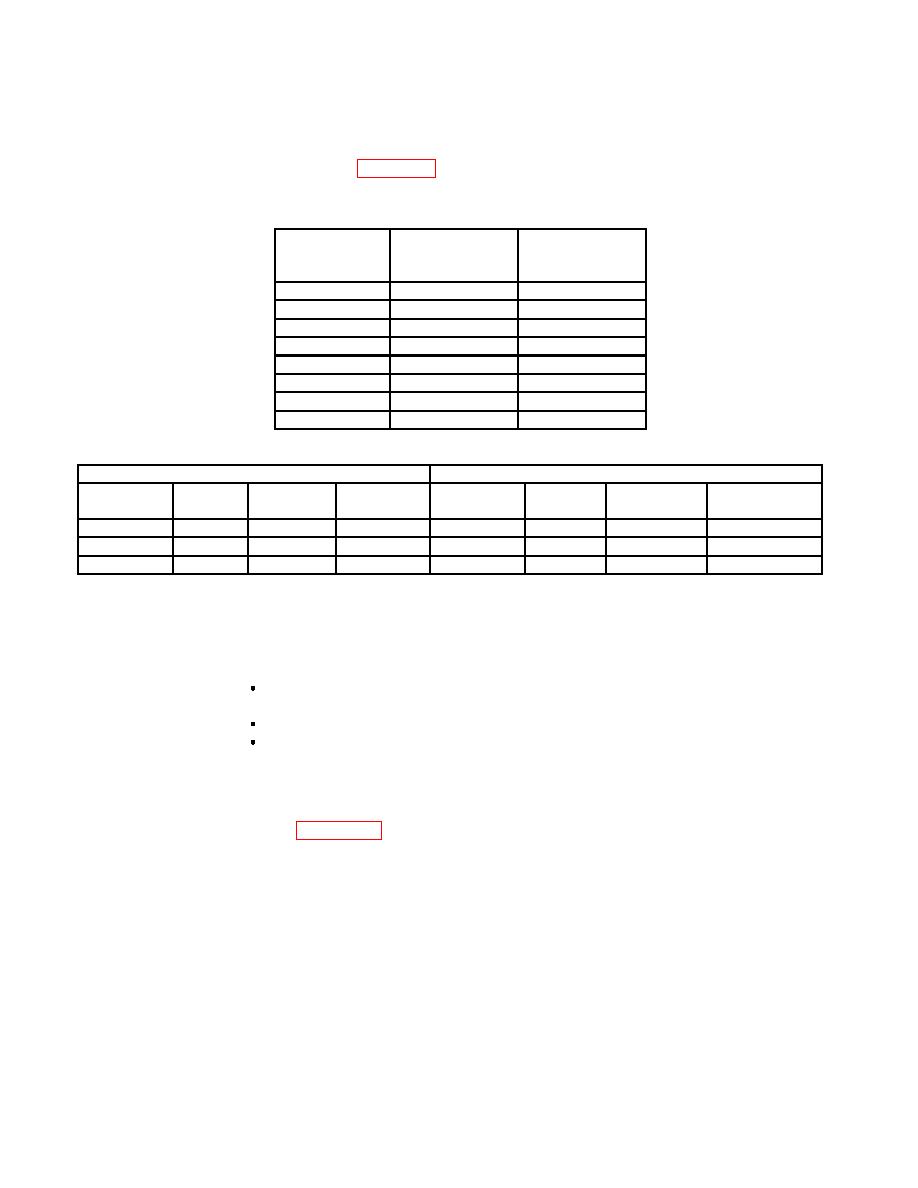
TM 9-2320-280-34
d. Rivet Hole Drilling.
1. Center punch all new rivet locations. Center punch mark must be large enough to prevent drill from
slipping out of position, yet it must not dent the surface of the material. To prevent denting, place a bucking bar
behind material during punching.
2. Make sure drill is the correct size (tables 22-1 and 22-2) and point is properly ground. A no. 10 drill is
used to install standard 3/16-inch blind rivets.
RIVET
DRILL
DIAMETER
DRILL SIZE
DIAMETER
(INCH)
(INCH)
1/16
#51
0.0670
3/32
#41
0.0960
1/8
#30
0.1285
5/32
#21
0.1590
3/16
#10
0.1910
1/4
F
0.2570
5/16
P
0.3230
318
W
0.3860
NOMINAL DIAMETER (INCH)
OVERSIZE DIAMETER (INCH)
RIVET
DRILL
RIVET
DRILL
DIAMETER
SIZE
MINIMUM MAXIMUM DIAMETER
SIZE
MINIMUM
MAXIMUM
1/8
#30
0.129
0.132
1/8
#27
0.143
0.146
5132
#20
0.160
0.164
5/32
#16
0.176
0.180
3116
#10
0.192
0.196
3/16
#5
0.205
0.209
3. Place drill in center mark for new rivet locations, or align drill with old hole when replacing old rivets
with oversize rivets. When using a power drill, give the bit a few turns with fingers before starting motor. This
will help assure that drill does not jump out of position when motor is started.
NOTE
While drilling, hold drill at 90 degree angle to material surface.
Avoid letting drill wobble, making oblong holes.
Avoid excessive pressure. Let drill bit do the cutting.
Do not push drill through material.
4. Remove all burrs with a metal countersink or file.
5. Clean away all drill chips. Care must be taken to assure that no chips are trapped between sheets of
metal.
6. Apply sealing compound (Appendix B, Item 47) to hole and surrounding area.
22-8

